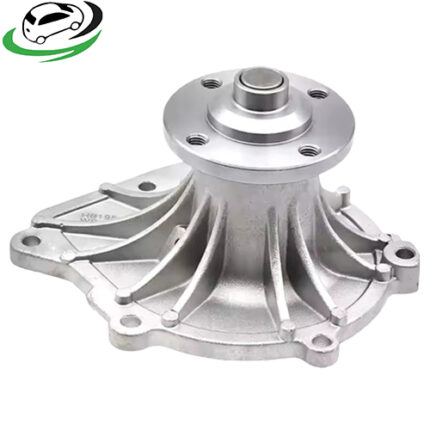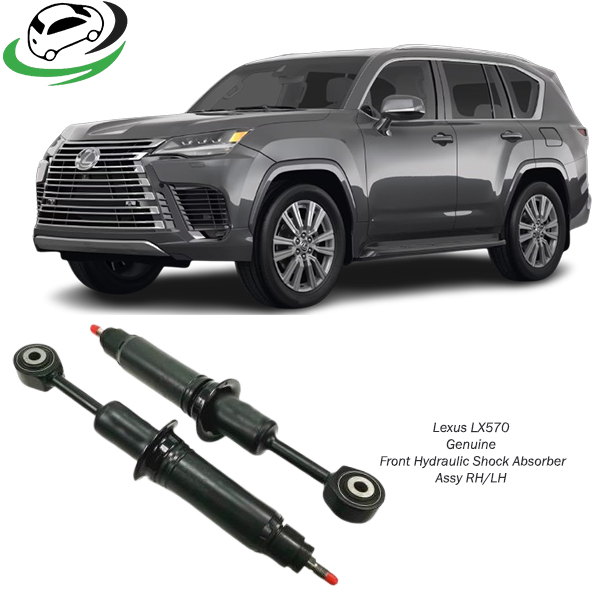-6%
A Front Hydraulic Shock Absorber Assembly (or “shock absorber”) is a key component of a vehicle’s suspension system, providing stability, handling, and comfort. They are essential for maintaining vehicle control, especially when driving on rough or uneven surfaces, and are typically labeled as right-hand (RH) or left-hand (LH) to fit specific sides of a vehicle.
Here’s a comprehensive breakdown of the structure, function, benefits, installation process, maintenance, and key considerations for front hydraulic shock absorbers.
1. Function of a Front Electric Shock Absorber Assembly
Front hydraulic shock absorbers are responsible for controlling the motion of a vehicle’s suspension. When driving, the wheels encounter bumps, dips, and various road irregularities. The shock absorber helps to control the vertical motion of the wheels, preventing them from bouncing excessively and ensuring that they stay in contact with the ground.
Key functions include:
- Damping: Shock absorbers control the speed at which the suspension springs compress and decompress, reducing oscillations and providing a smooth ride.
- Stabilization: By minimizing body roll, shock absorbers help keep the vehicle stable and prevent it from tilting or leaning excessively during turns.
- Enhanced Braking: Effective shock absorbers help reduce stopping distances by ensuring maximum tire contact with the road surface, especially during hard braking.
- Vibration Reduction: By absorbing road vibrations, they make the driving experience more comfortable and less tiring.
2. Components of a Electric Shock Absorber Assembly
A front hydraulic shock absorber is typically comprised of several core parts that contribute to its performance and longevity:
- Cylinder (Outer Tube): Holds the hydraulic fluid, which is the medium responsible for damping the movement.
- Piston and Piston Rod: These move within the cylinder, creating resistance as they push through the hydraulic fluid.
- Valving System: This controls the flow of fluid within the cylinder, allowing for different levels of damping based on driving conditions.
- Seals and Bushings: These prevent leaks and provide a cushion to reduce wear between moving parts.
- Mounts: These connect the shock absorber to the suspension and the vehicle’s frame.
3. Types of Electric Shock Absorbers
While all hydraulic shock absorbers share the same basic design, there are variations depending on vehicle requirements:
- Twin-Tube: Contains two cylinders (one inner and one outer), with hydraulic fluid occupying the inner cylinder and some fluid stored in the outer cylinder to reduce pressure. This design is common in everyday vehicles.
- Monotube: This type features a single tube containing both the fluid and gas separated by a floating piston, providing more precise control and often used in high-performance vehicles.
- Gas-Charged: These contain nitrogen gas along with hydraulic fluid to prevent fluid aeration, which reduces fade and improves performance.
4. Benefits of Using Genuine Electric Shock Absorbers
Opting for genuine hydraulic shock absorbers for your vehicle’s front suspension provides several notable advantages:
- Enhanced Performance and Durability: Genuine parts are manufactured to OEM specifications, ensuring a high-quality build and reliable performance under a variety of conditions.
- Optimized Handling and Stability: Designed specifically for the vehicle model, genuine shocks offer the best balance of ride comfort, stability, and responsiveness.
- Longer Service Life: The use of quality materials and precise engineering means that genuine shock absorbers often last longer than aftermarket options.
- Warranty Support: Genuine parts often come with warranties, providing additional protection and customer support if issues arise.
5. Installation Process for Electric Shock Absorbers
Installing or replacing a front hydraulic shock absorber involves a few steps that require basic tools, mechanical knowledge, and safety precautions. Here’s a general overview:
- Prepare the Vehicle: Park on a flat surface and secure the vehicle on jack stands, lifting the front wheels off the ground.
- Remove the Old Shock Absorber: Detach the wheel and locate the shock absorber assembly. Loosen the bolts connecting it to the suspension and vehicle frame, and carefully remove it.
- Inspect the Surrounding Components: Before installing the new shock, check the surrounding suspension components for wear or damage, as worn parts can reduce the life of the new shock.
- Install the New Shock Absorber: Secure the new shock absorber in place, bolting it to the vehicle frame and suspension mount. Ensure all bolts are tightened to manufacturer specifications.
- Test the Installation: Reattach the wheels, lower the vehicle, and test the shock absorbers by pressing down on the front end. If the suspension rebounds smoothly, the installation was successful.
Proper installation helps maximize shock absorber performance and ensures vehicle stability.
6. Maintenance Tips for Electric Shock Absorbers
While shock absorbers generally don’t require regular maintenance, following these tips can help prolong their life and ensure effective performance:
- Regular Inspections: Check for signs of leaks, worn bushings, or unusual tire wear during routine maintenance or oil changes.
- Monitor for Signs of Wear: If you notice excessive bouncing, unusual noises, or a rough ride, it may be time to replace the shock absorbers.
- Replace in Pairs: For balanced performance, replace both the right (RH) and left (LH) shocks at the same time.
- Avoid Overloading: Carrying excessive weight increases wear on the shocks and other suspension components.
7. Signs of Shock Absorber Wear
Over time, hydraulic shock absorbers will wear out and lose effectiveness. Here are some common signs indicating they may need replacement:
- Bouncing or Excessive Oscillation: A worn shock absorber will cause the vehicle to bounce more than usual after hitting a bump.
- Reduced Handling Stability: Difficulty in steering or body roll when cornering can be a sign of worn shocks.
- Fluid Leaks: Hydraulic fluid leaking from the shock absorber indicates that seals are worn or damaged.
- Tire Cupping or Uneven Wear: Poor shock absorber performance can cause uneven tire wear, which reduces tire lifespan.
- Unusual Noises: Clunking or knocking noises may indicate worn bushings or loose mounts.
8. Environmental Impact and Disposal
Used hydraulic shock absorbers contain hydraulic fluid, a non-biodegradable substance that can be harmful to the environment if not disposed of properly. When replacing shocks, it’s important to take the old units to a certified recycling facility or mechanic who follows proper disposal procedures.
9. Choosing the Right Front Electric Shock Absorber
When selecting a front hydraulic shock absorber, there are several factors to consider:
- Vehicle Compatibility: Ensure that the shock absorber assembly is designed for your vehicle’s make, model, and year. Using the correct RH or LH shock is crucial for precise fitment.
- Driving Conditions: For off-road or performance driving, a monotube or gas-charged shock may provide better performance. Twin-tube shocks, however, are sufficient for most everyday vehicles.
- Material Quality: Genuine hydraulic shocks use high-grade materials that ensure durability and resistance to wear.
- Cost vs. Value: While genuine shocks may be more expensive upfront, they often last longer and provide superior performance, making them cost-effective over time.
10. Conclusion
A Front Hydraulic Shock Absorber Assembly (RH/LH) is essential for any vehicle’s suspension system, providing the stability and handling necessary for safe driving. Genuine shock absorbers offer reliable performance, longer service life, and a smoother, more comfortable ride by minimizing road-induced oscillations. Investing in a quality shock absorber assembly not only enhances your vehicle’s handling but also contributes to safer driving conditions by maintaining tire-road contact and reducing stopping distances. Proper installation and regular inspections can maximize the lifespan of these vital suspension components, ensuring they continue to deliver the performance and comfort drivers expect.




Reviews
Clear filtersThere are no reviews yet.